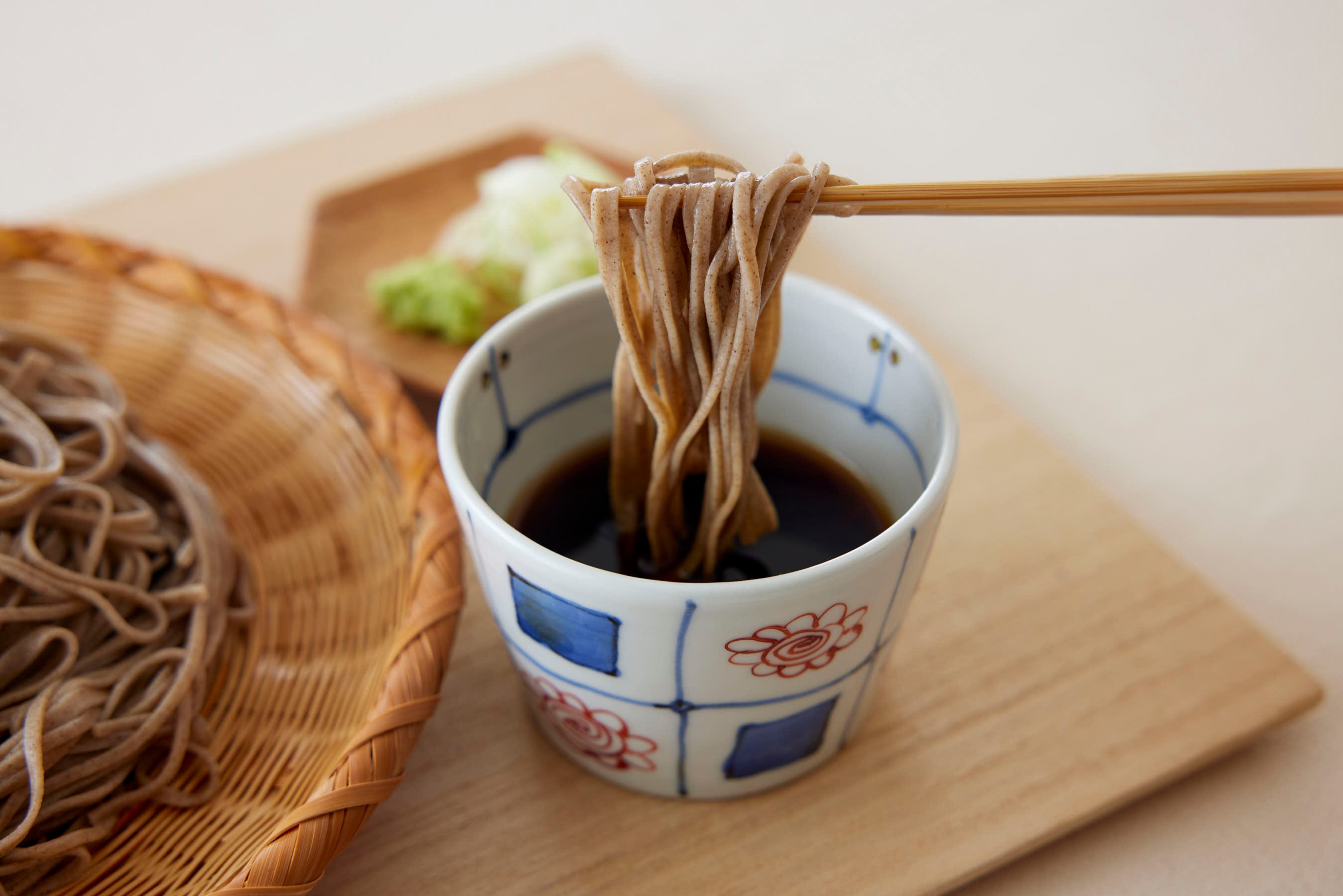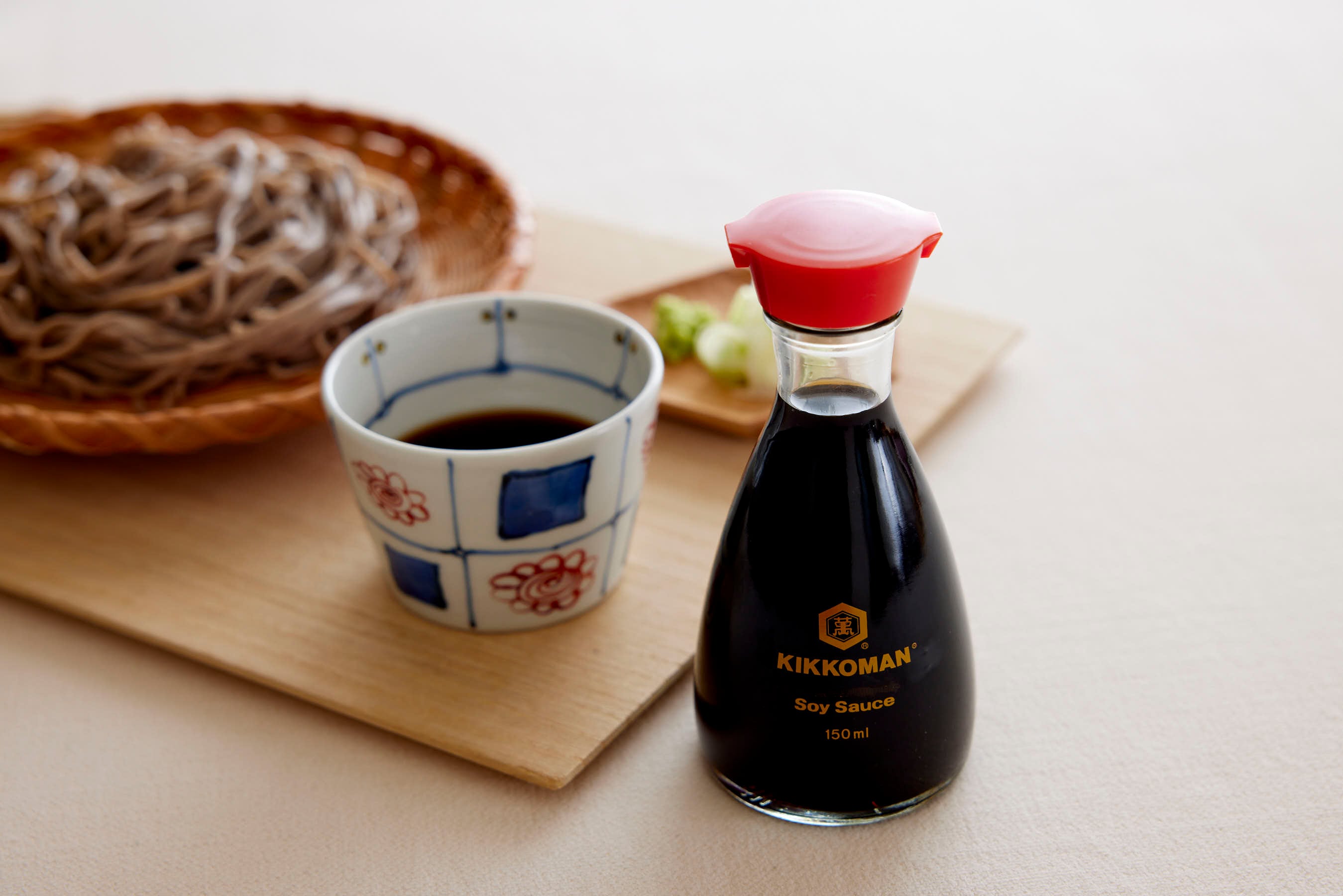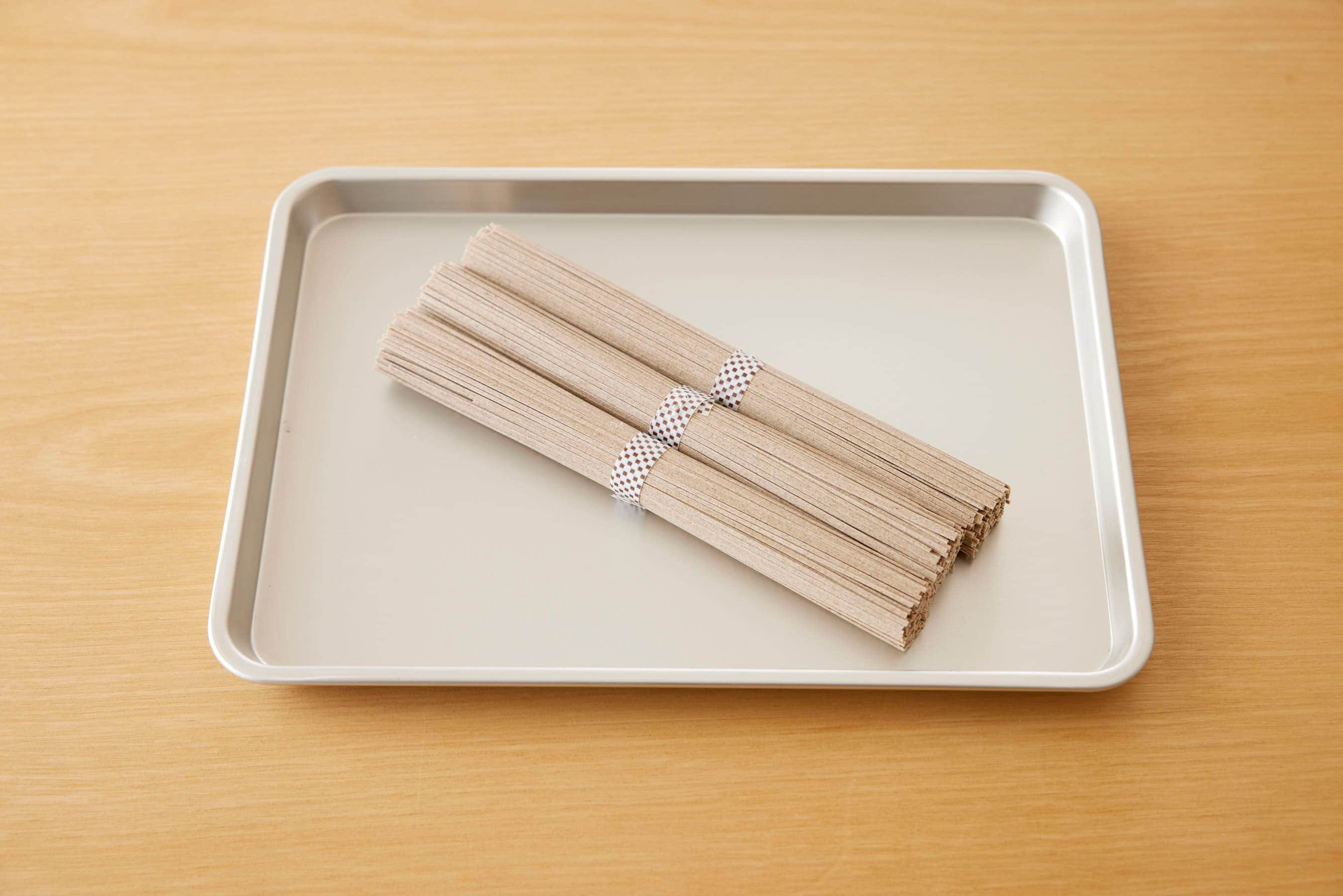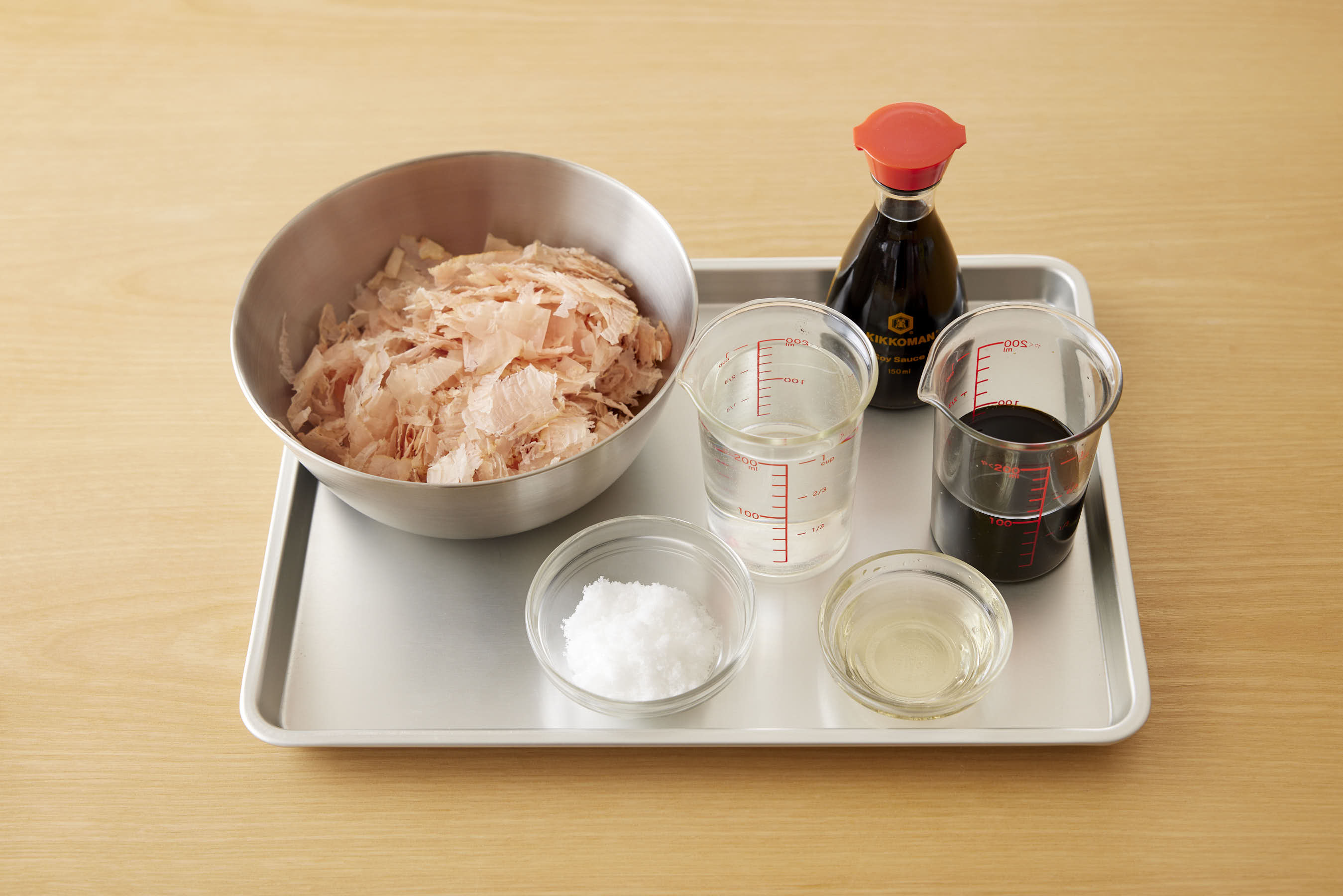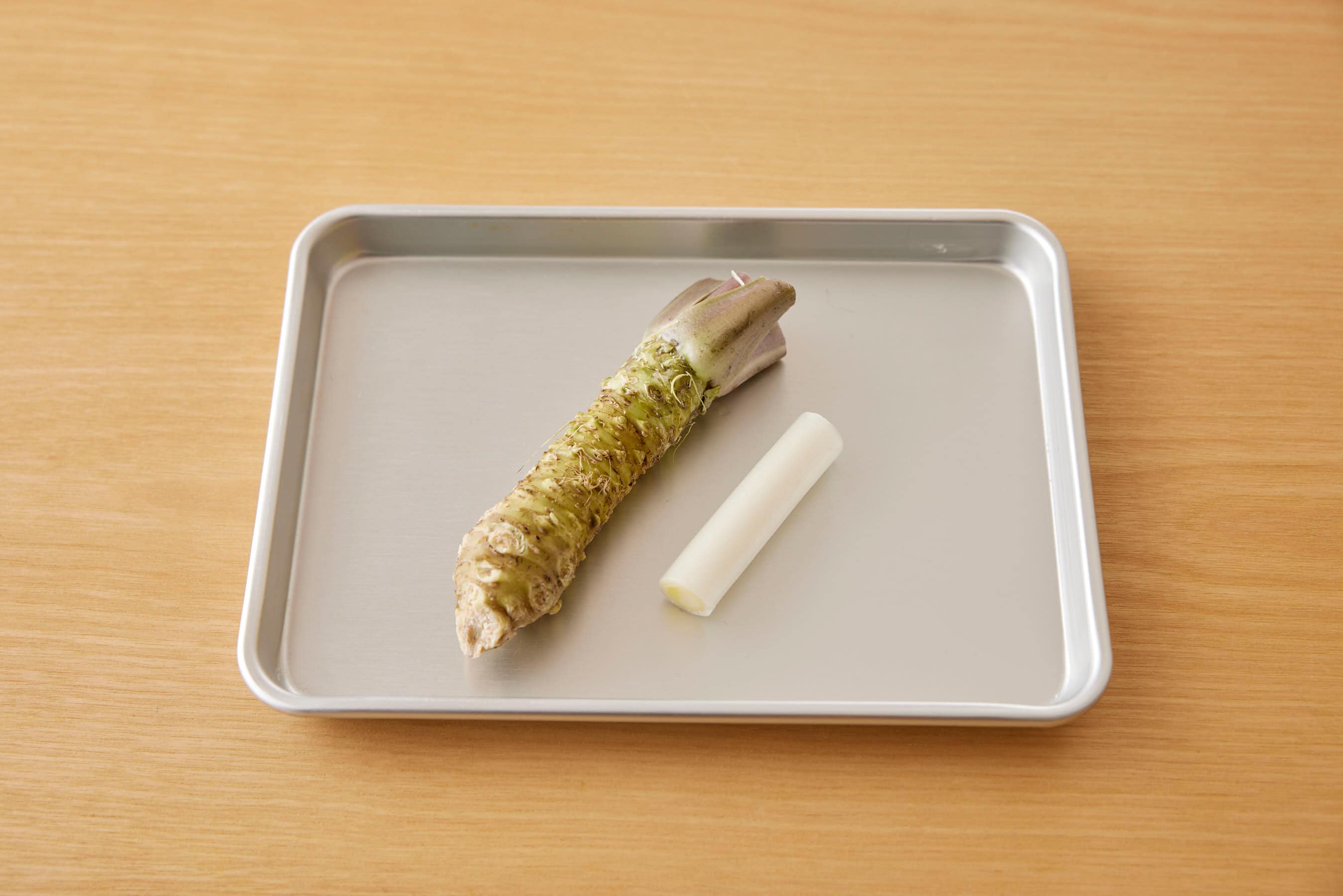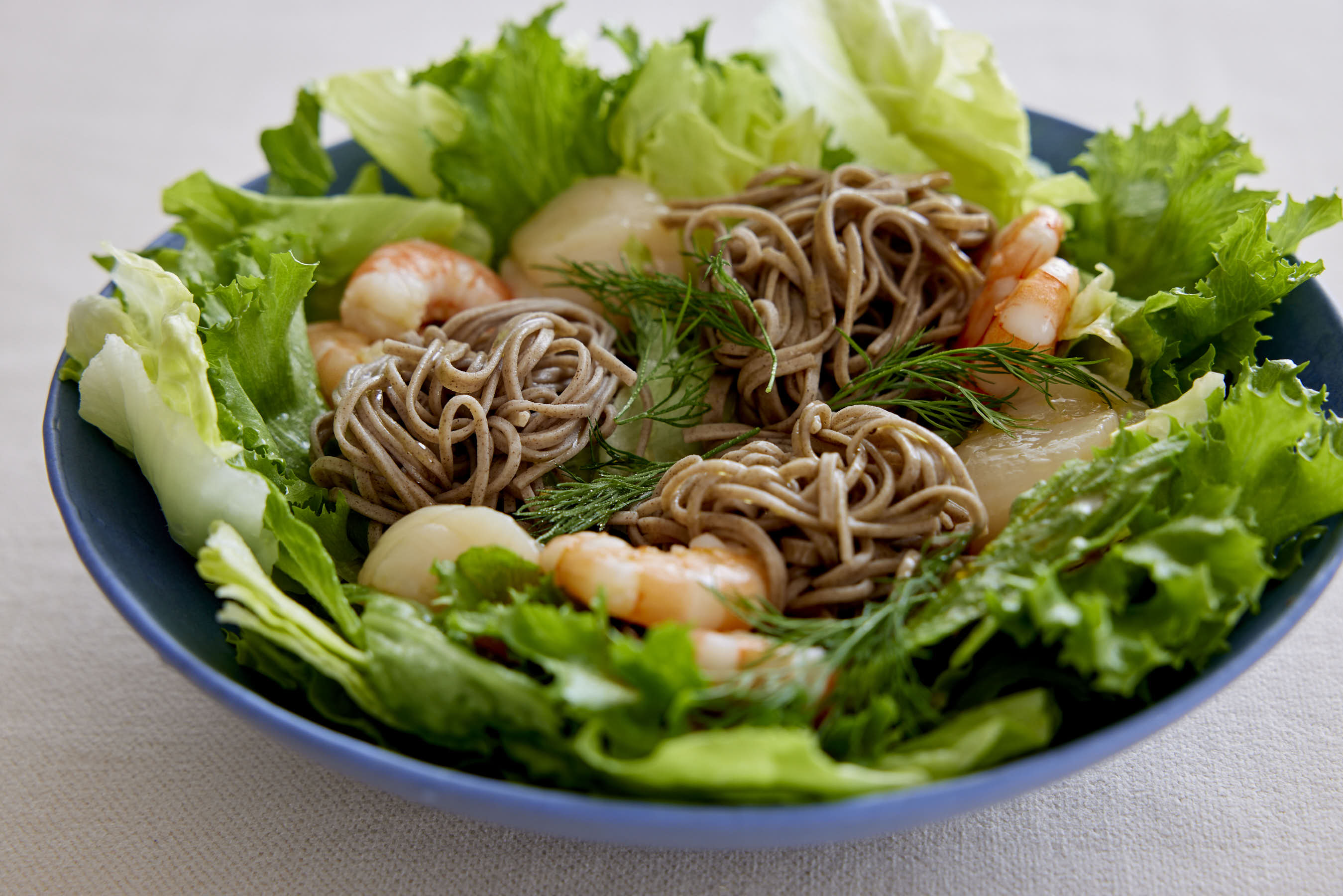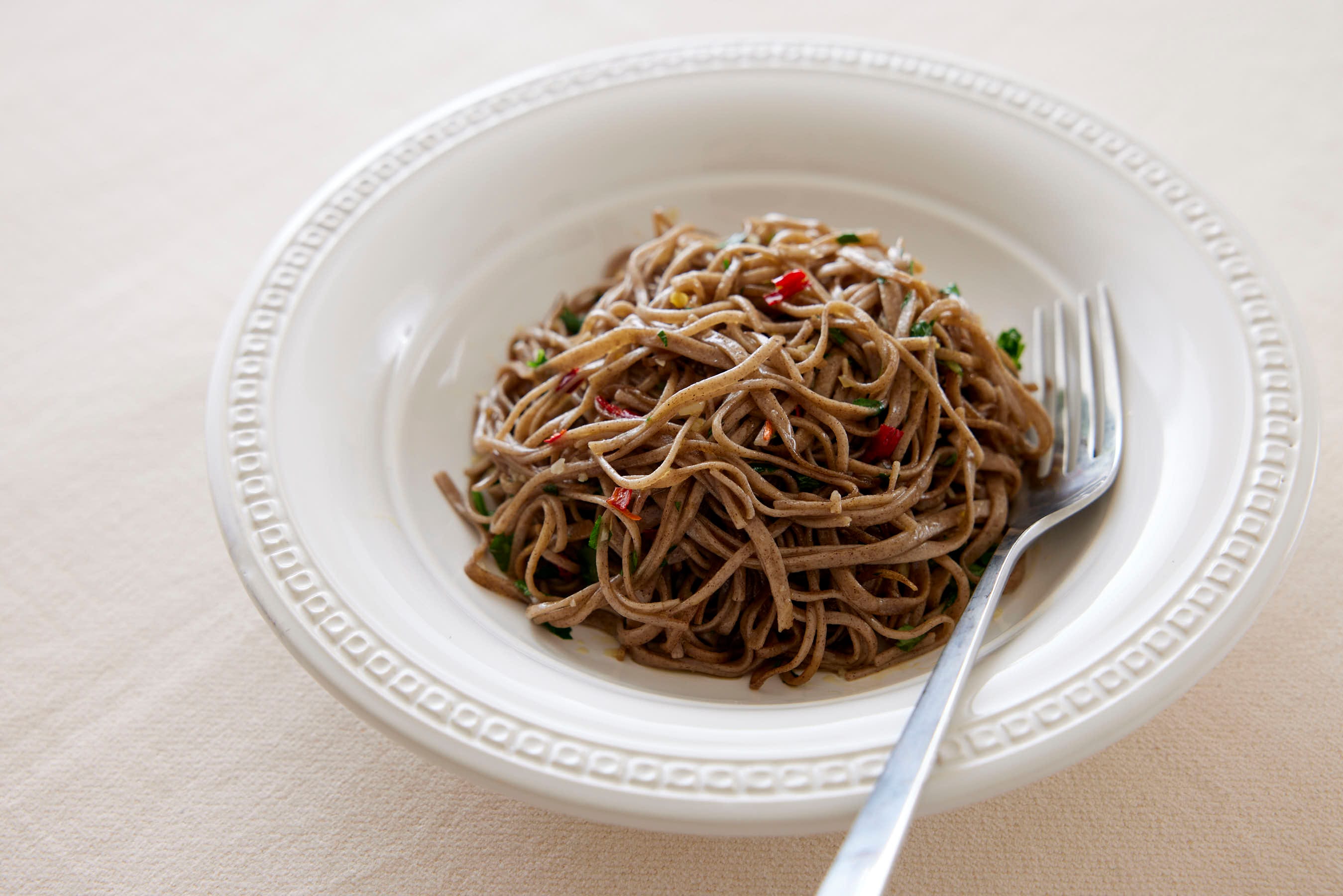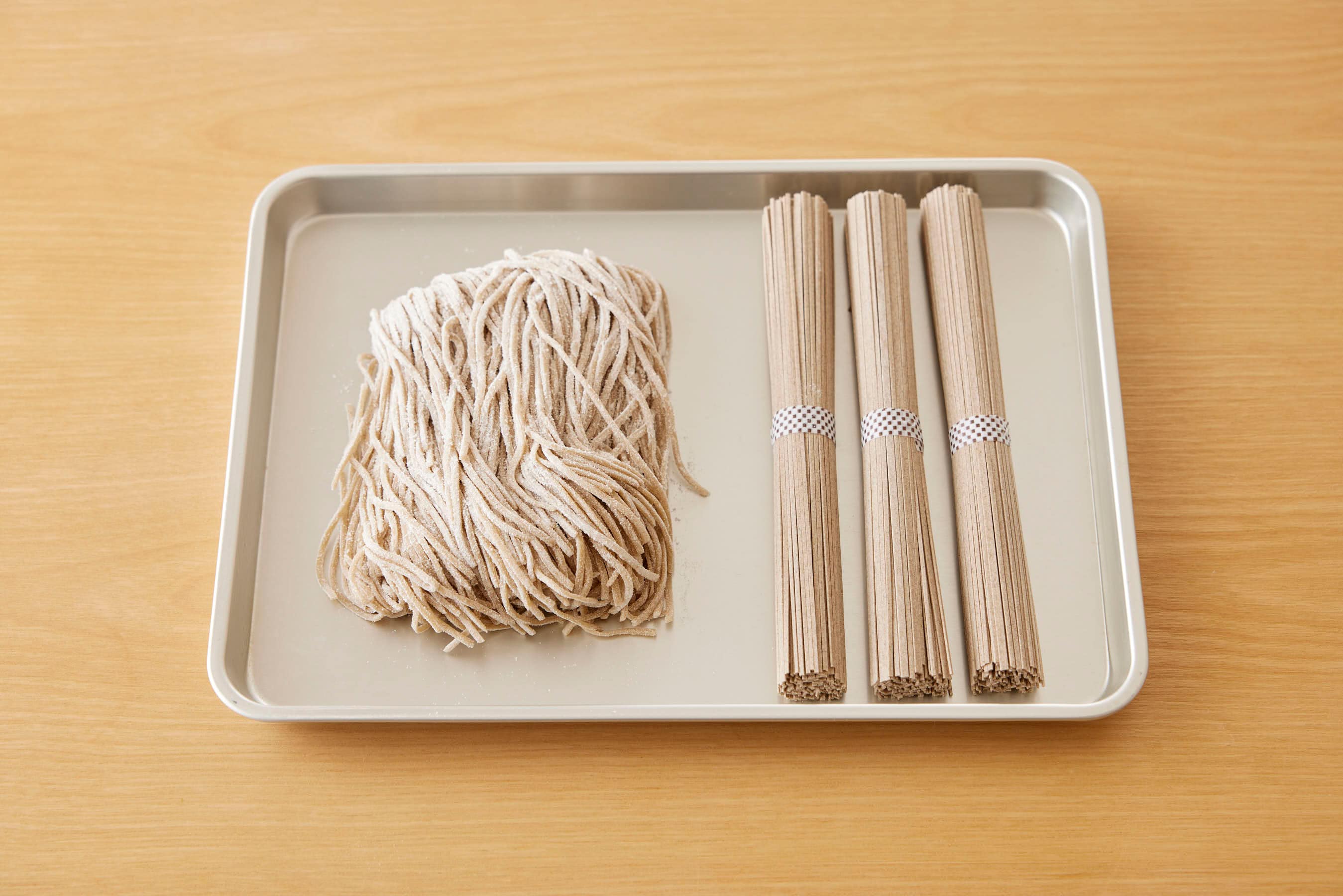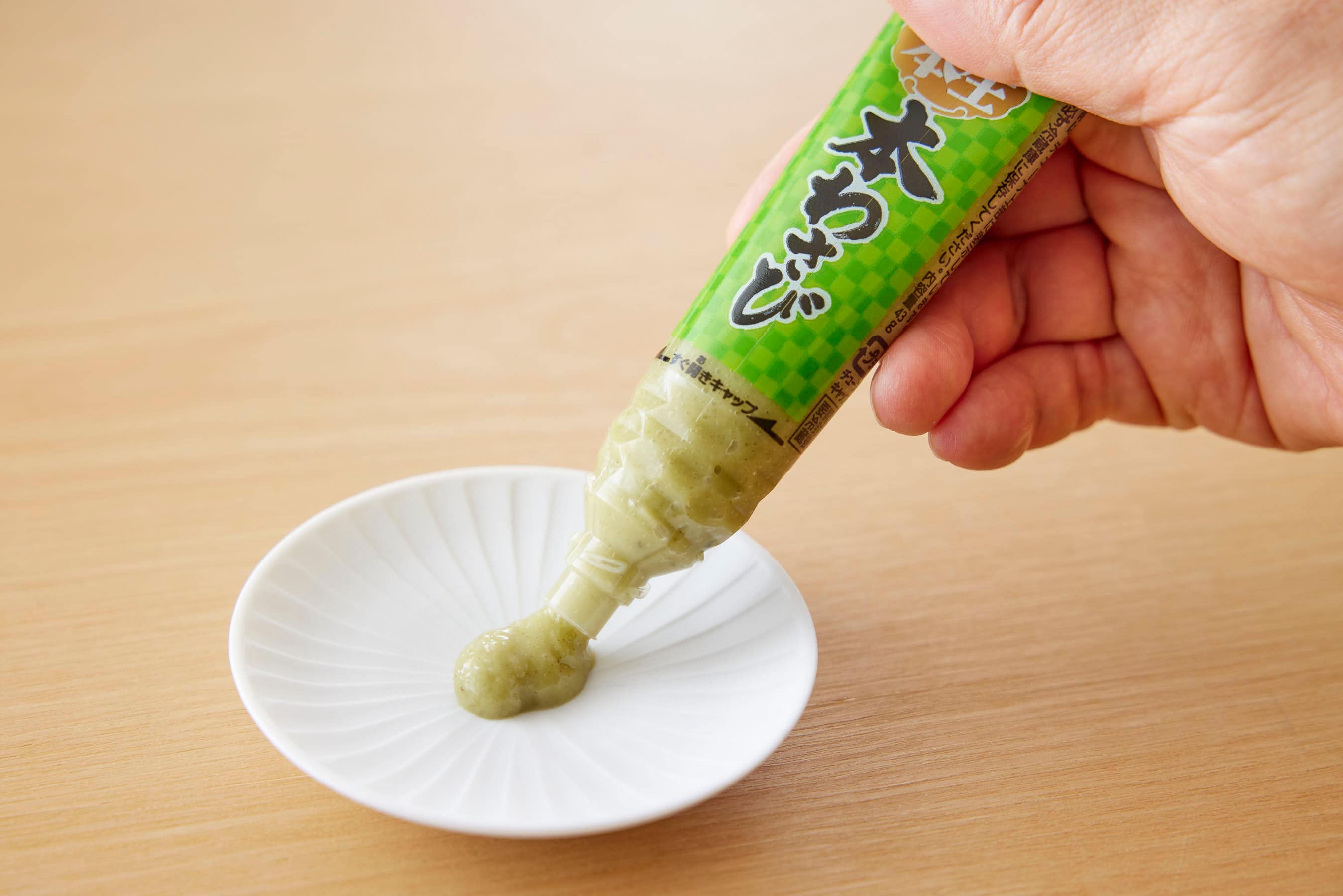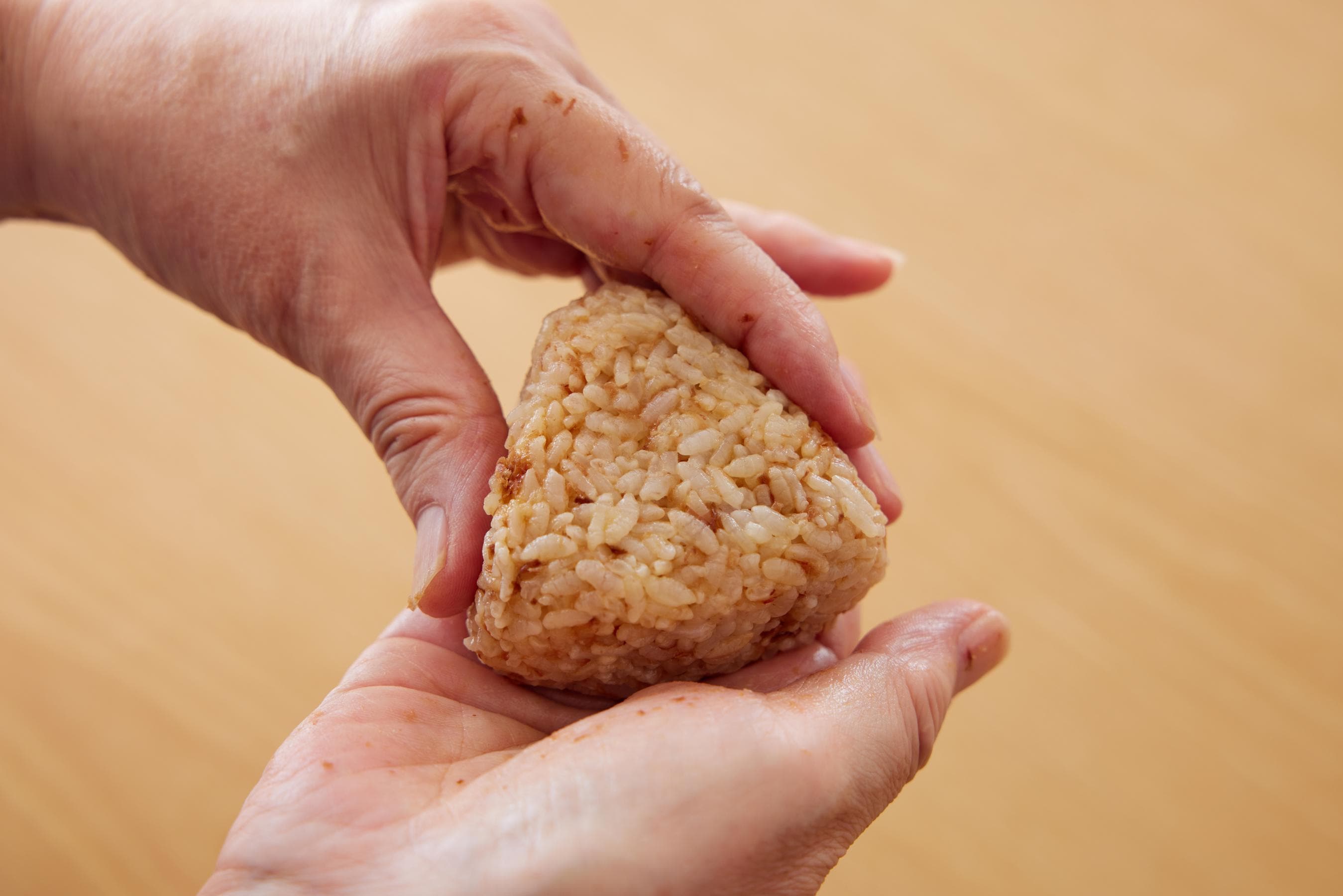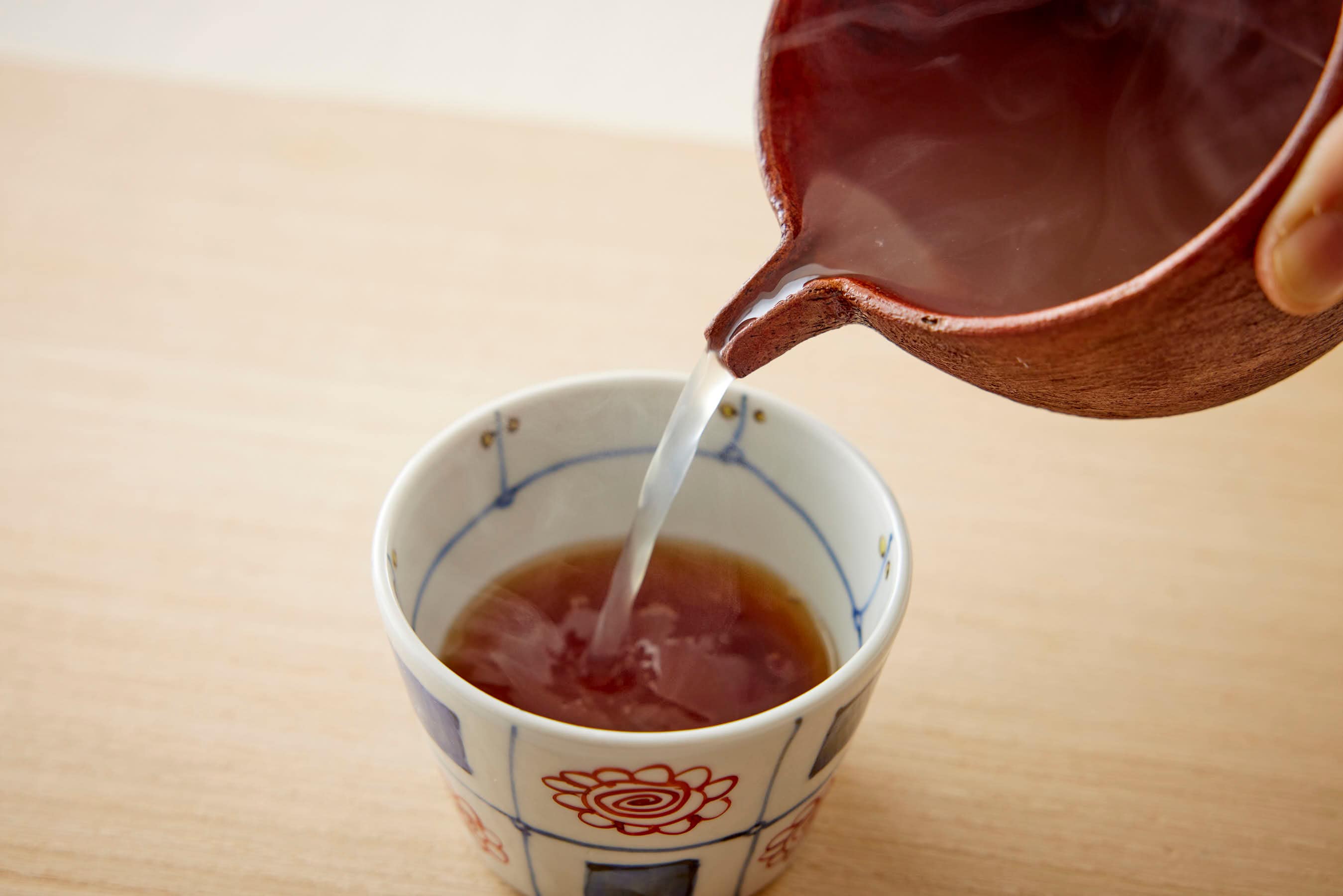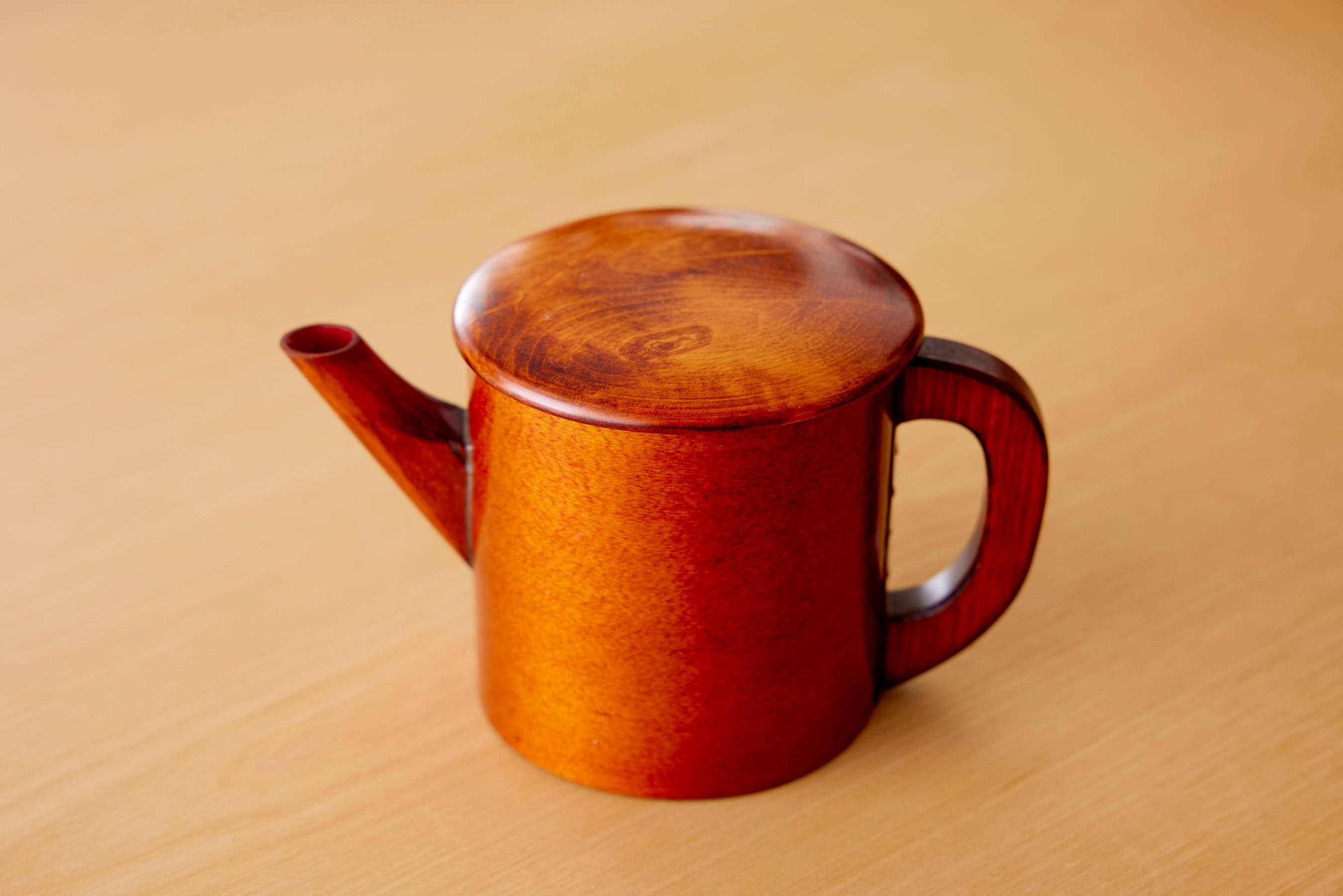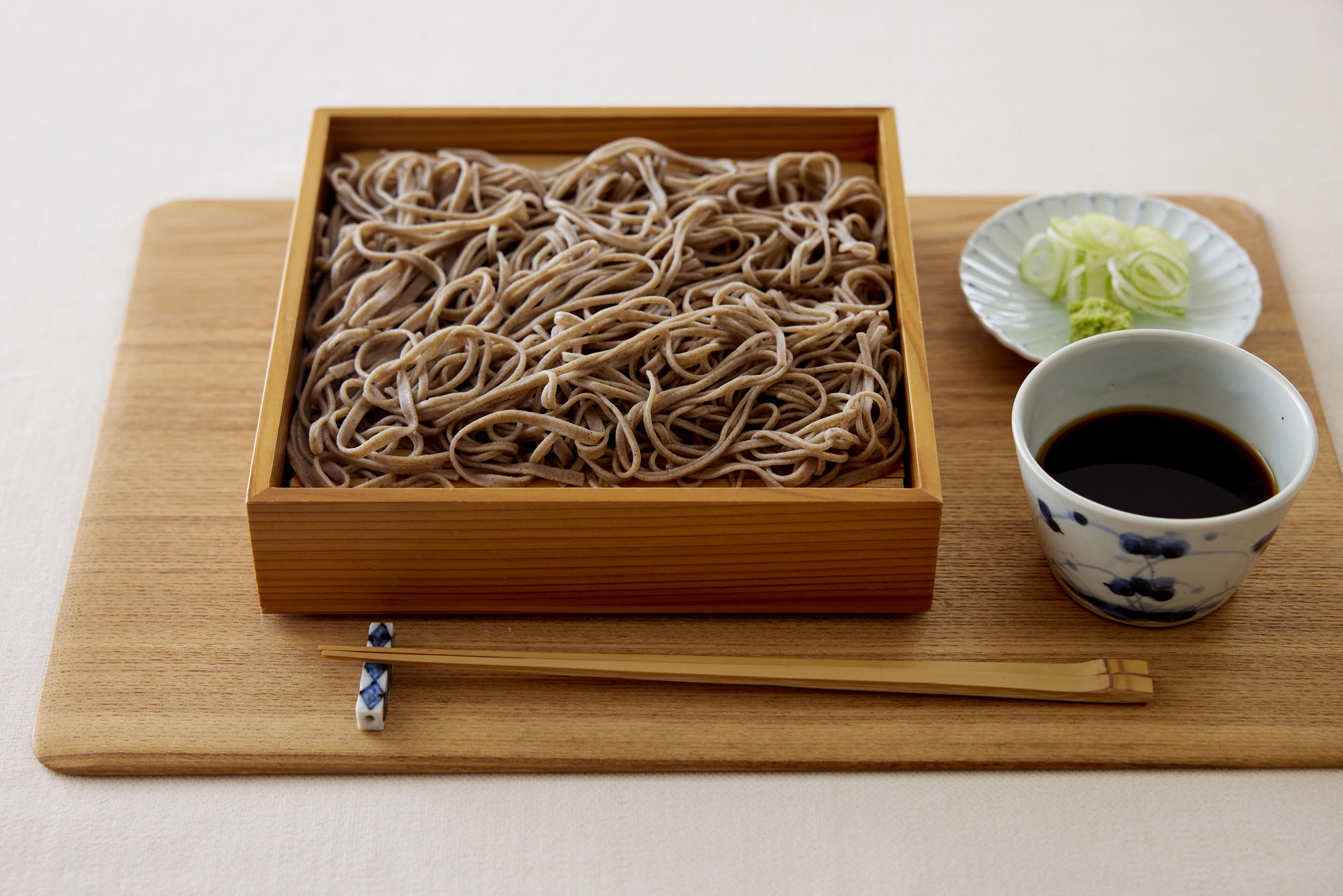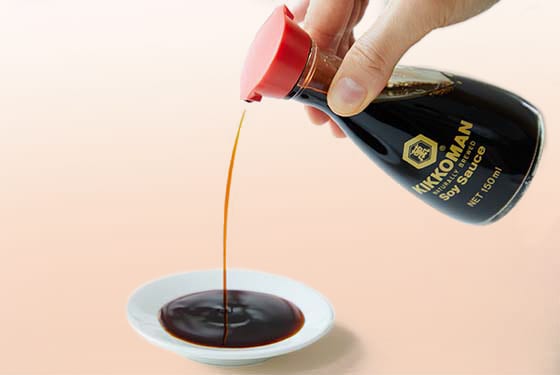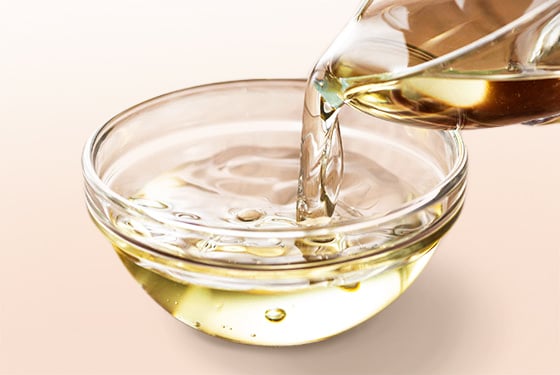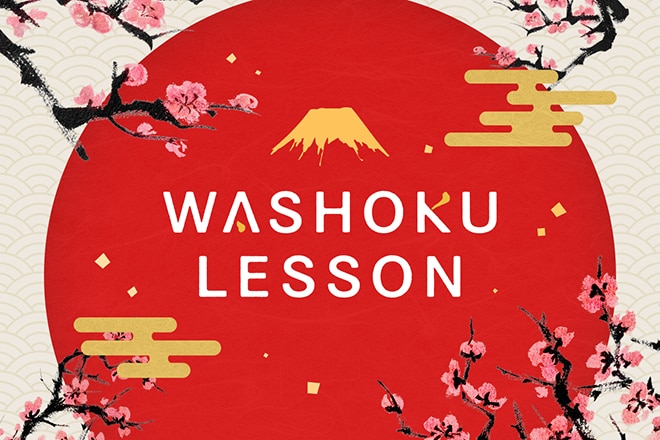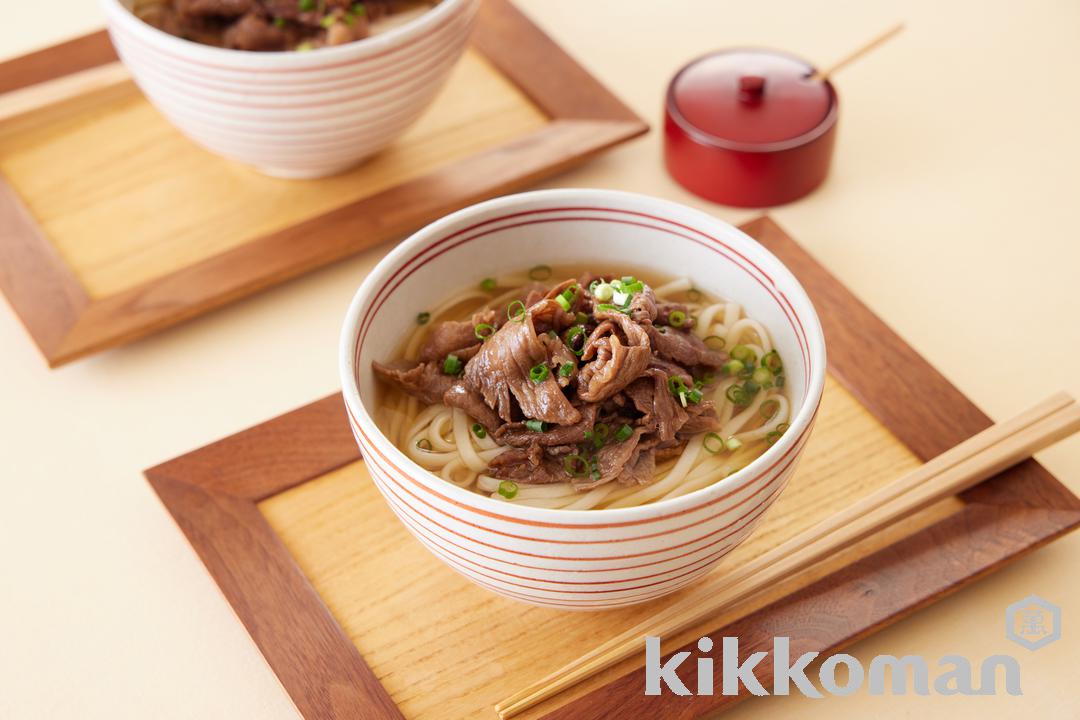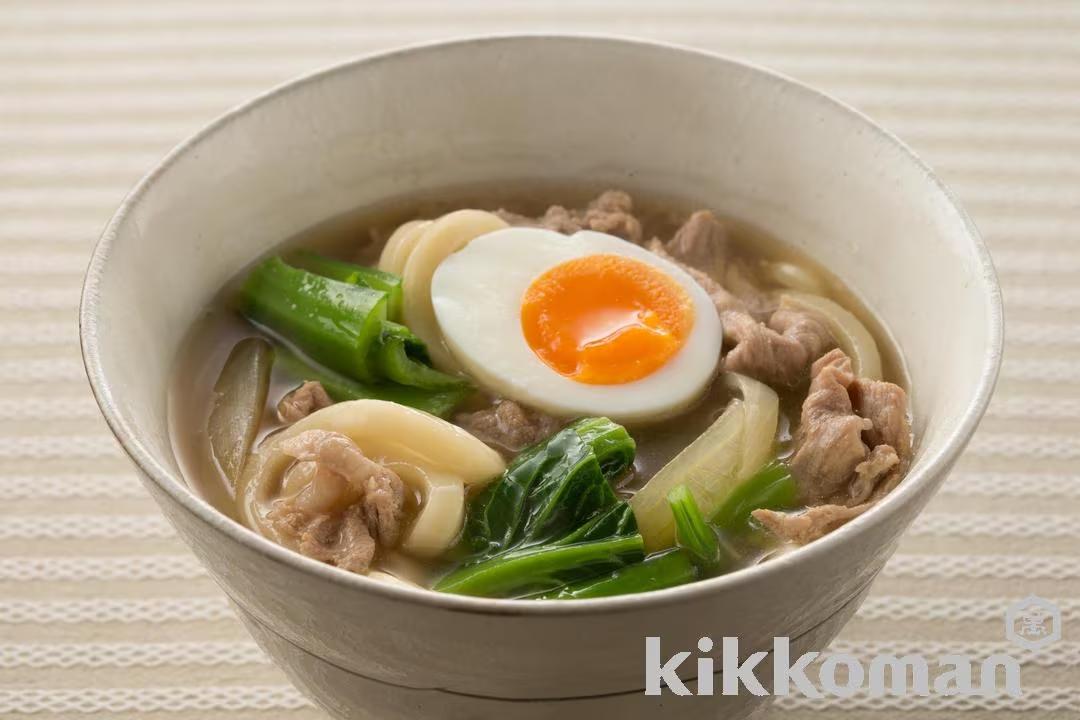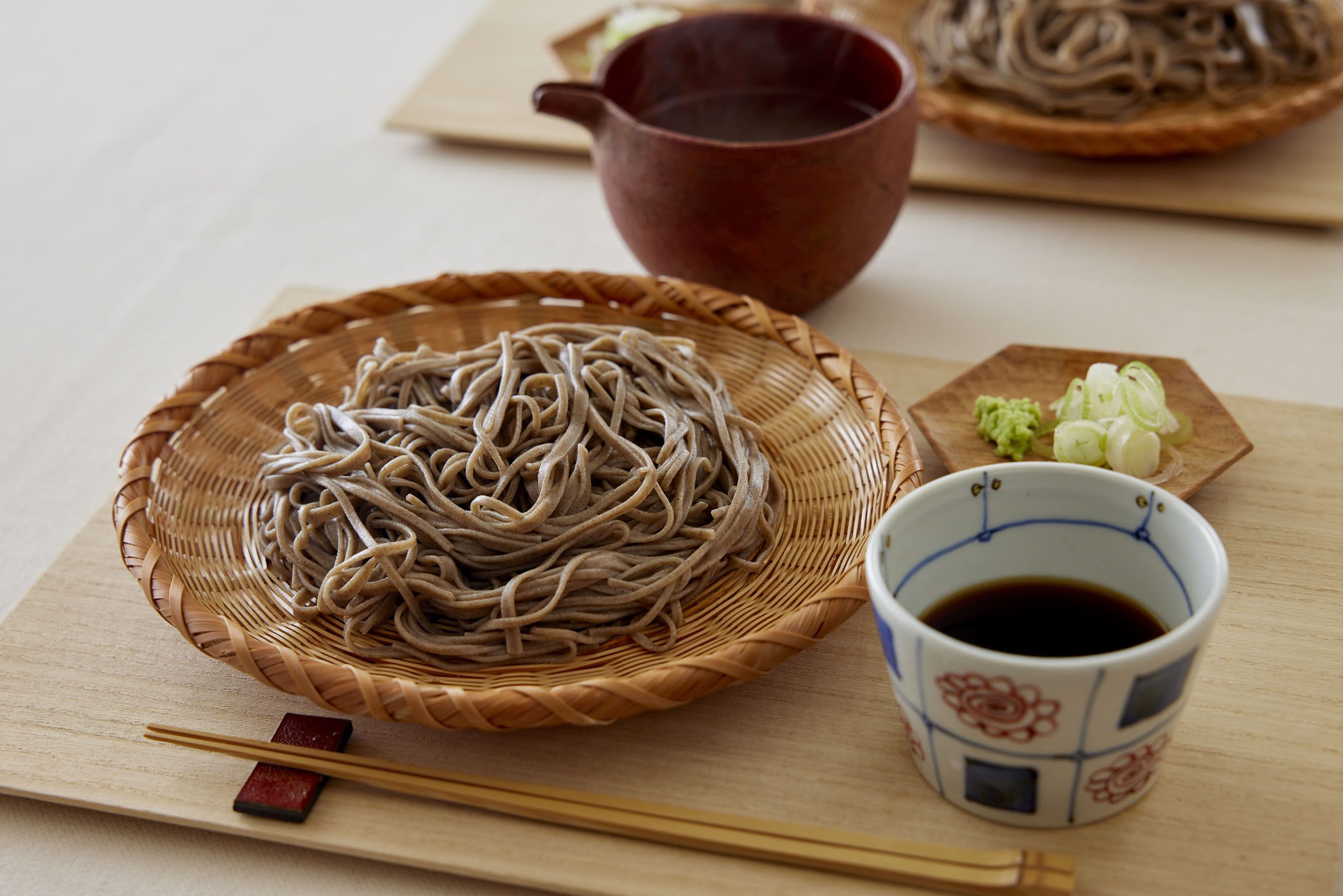
Boiled soba noodles are dipped in a soy sauce-based broth rich in dashi. This dish offers the simplest and purest way to enjoy the unique aroma of soba.
- by Yuko Ihara
Table of Contents
- What is Zaru Soba?
- The Secret to Delicious Flavor of Zaru Soba
- Things to Remember When Making Zaru Soba
- Ingredients for Making Zaru Soba
- Calories and Cooking Time
- How to Make the “Tsuyu” (Noodle Soup Base)
- How to Prepare the Condiments
- How to Boil the Soba Noodles
- More Ways to Enjoy Zaru Soba
- FAQ
- Kitchen Utensils Used in This Recipe
- Trivia About Soba
- Kikkoman Products Used in This Recipe
- About the Recipe Author
What is Zaru Soba?
Soba is a traditional Japanese noodle made primarily from buckwheat, known for its nutty aroma. “Zaru soba” gets its name from the way it's served—boiled soba placed on a bamboo tray called a “zaru”, eaten by dipping into a soy-based noodle soup base called “tsuyu”. You can enjoy it with condiments like wasabi or chopped green onion, either placed on top of the noodles or mixed into the tsuyu. Since the tsuyu has a strong flavor, dipping only lightly allows you to better appreciate the natural flavor of the noodles.
The Secret to Delicious Flavor of Zaru Soba
Dishes made with buckwheat flour have existed since ancient times, but it was during the Edo period (1603 - 1867) that dashi and soy sauce became widespread, leading to the creation of soba tsuyu (noodle soup base) and increasing soba’s popularity. The key to soba tsuyu is soy sauce; its richness and aroma add depth to the sauce’s flavor and enhance the natural fragrance of the soba noodles.
Things to Remember When Making Zaru Soba
Boil in Plenty of Water
Soba noodles have a light coating of flour on their surface, which can make the cooking water thick and prone to boiling over. To prevent this, use as large a pot as possible and boil the noodles in plenty of water. A large pot also allows the water to circulate more easily, helping the noodles cook evenly.
Rinse Under Running Water to Firm Up the Noodles
Ingredients (servings: 2-3)
Main Ingredients
Soba (dried soba noodles) - 200g (7 oz.)
Soba tsuyu / noodle soup base (makes 280ml / 9.5 fl oz.)
Katsuobushi (dried bonito flakes) - 15g (0.5 oz.)
Water - 200ml (6.8 fl oz.)
Kikkoman Soy Sauce - 100ml (3.4 fl oz.)
Mirin - 30ml (1 fl oz.)
Sugar - 20g (0.7 oz.)
Condiments
Japanese long green onion (negi) - 5cm (2 in.)
Fresh wasabi or pre-grated wasabi - to taste
Calories and Cooking Time

* Nutrition facts are for one serving.
* Nutrition and sodium values are for consumption of 10% of the tsuyu (dipping sauce) and the seasonings.
* Time to boil water and cool the tsuyu is not included in the cooking time.
How to Make the “Tsuyu” (Noodle Soup Base)
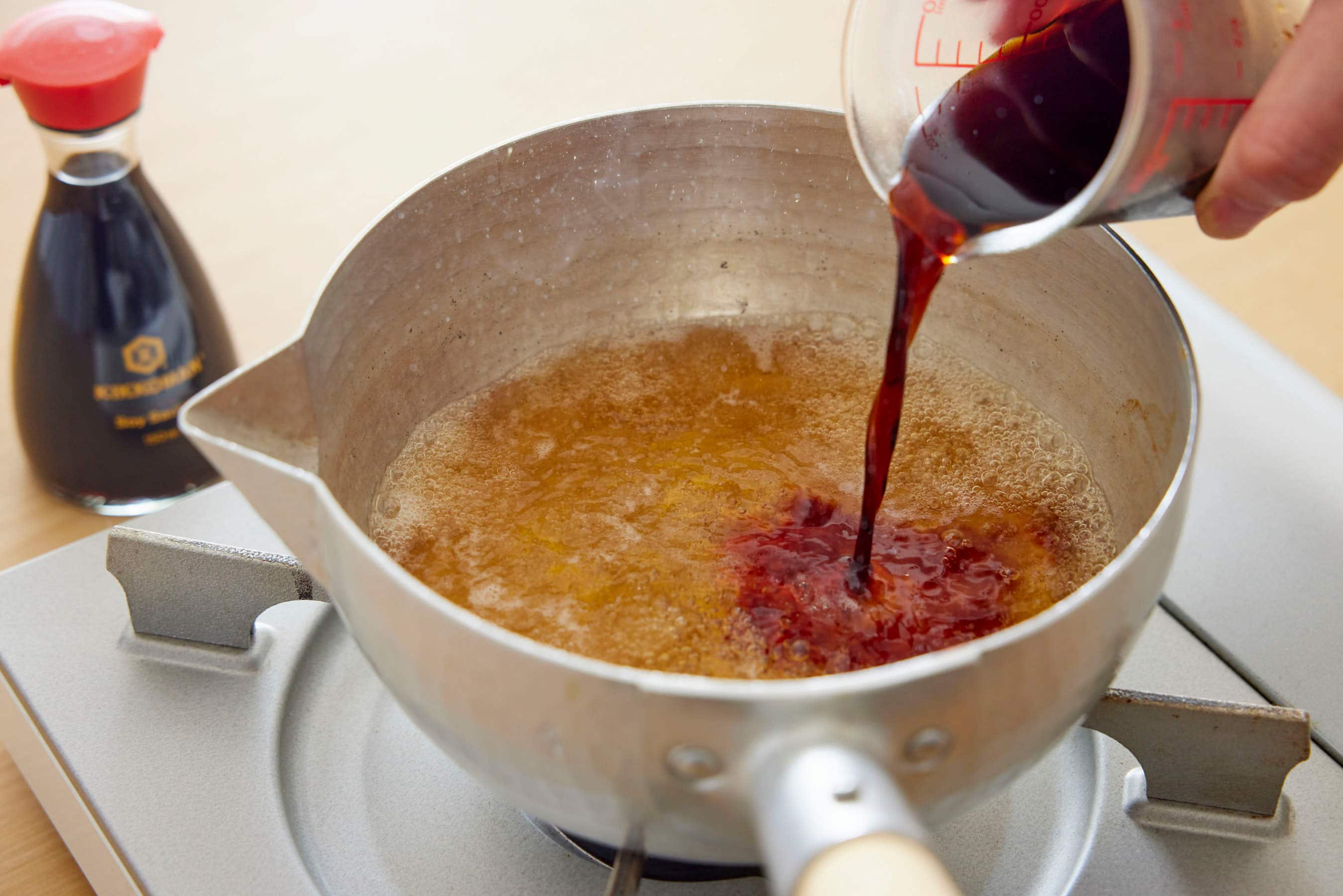
- 1Put the specified amount of water into a pot and place it over heat. When it comes to a boil, add the sugar, mirin, and Kikkoman Soy Sauce.
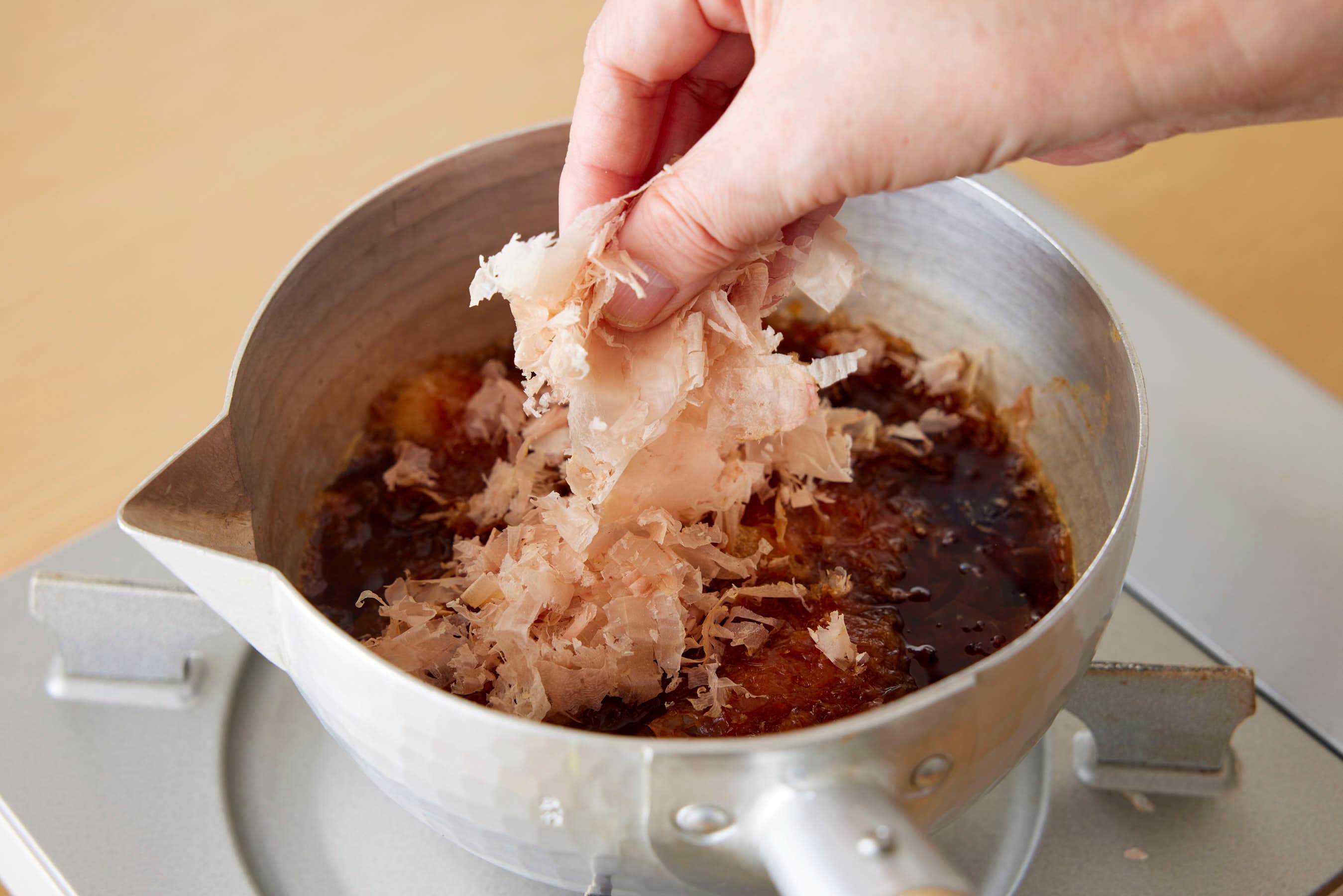
- 2When it starts gently bubbling again, reduce to medium-low heat and add the katsuobushi (dried bonito flakes) just before it reaches a full boil. Bring it to a brief boil, then turn off the heat and let it sit until it cools.
- TipsLetting it sit until cooled helps the flavor of the katsuobushi blend in more thoroughly.
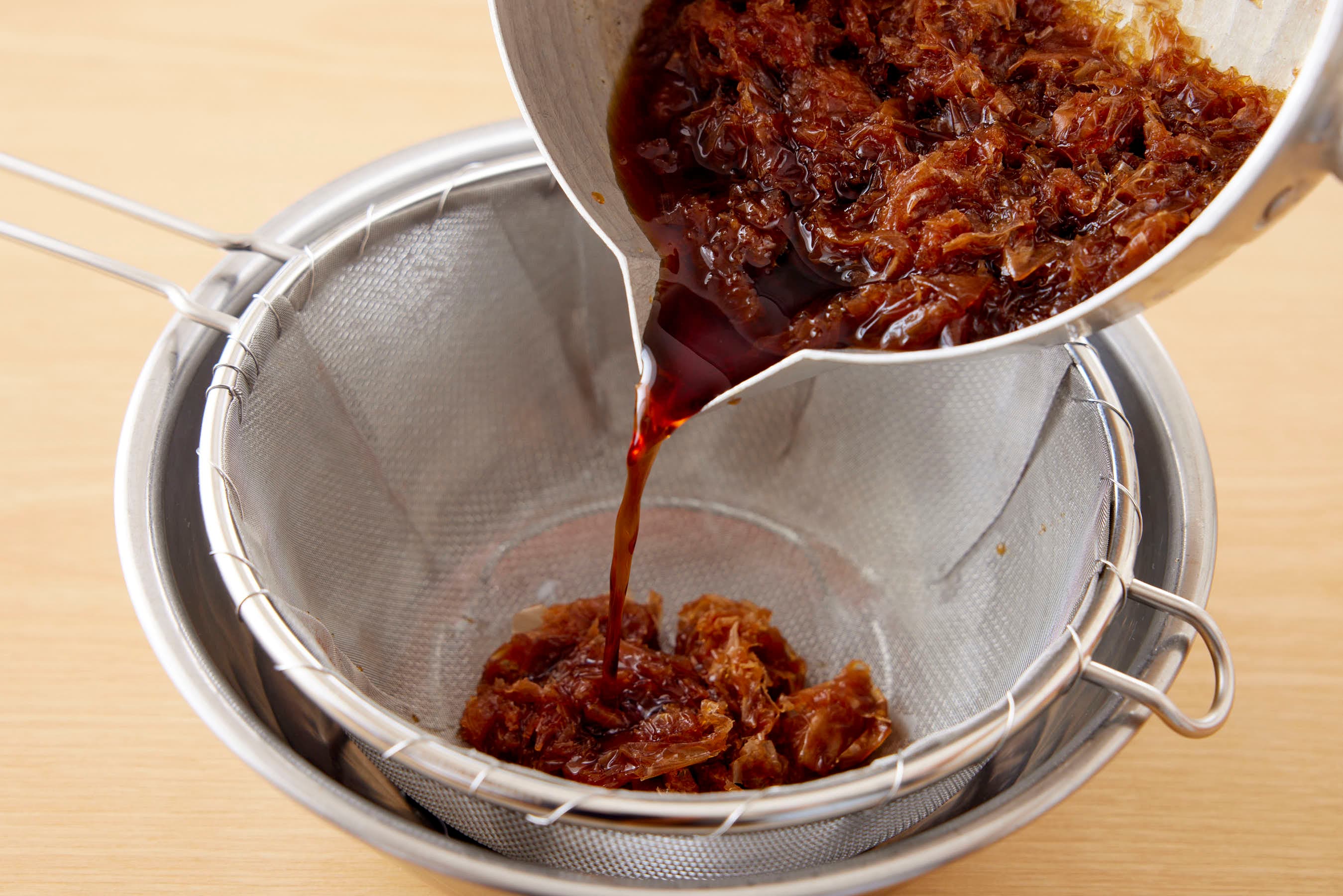
- 3Place a fine strainer (or sieve) over a bowl. Pour the entire contents of the pot into it to strain.
- TipsSince the katsuobushi absorbs some of the liquid, gently press it in the strainer at the end to extract more tsuyu.
Watch video for making the tsuyu
How to Prepare the Condiments
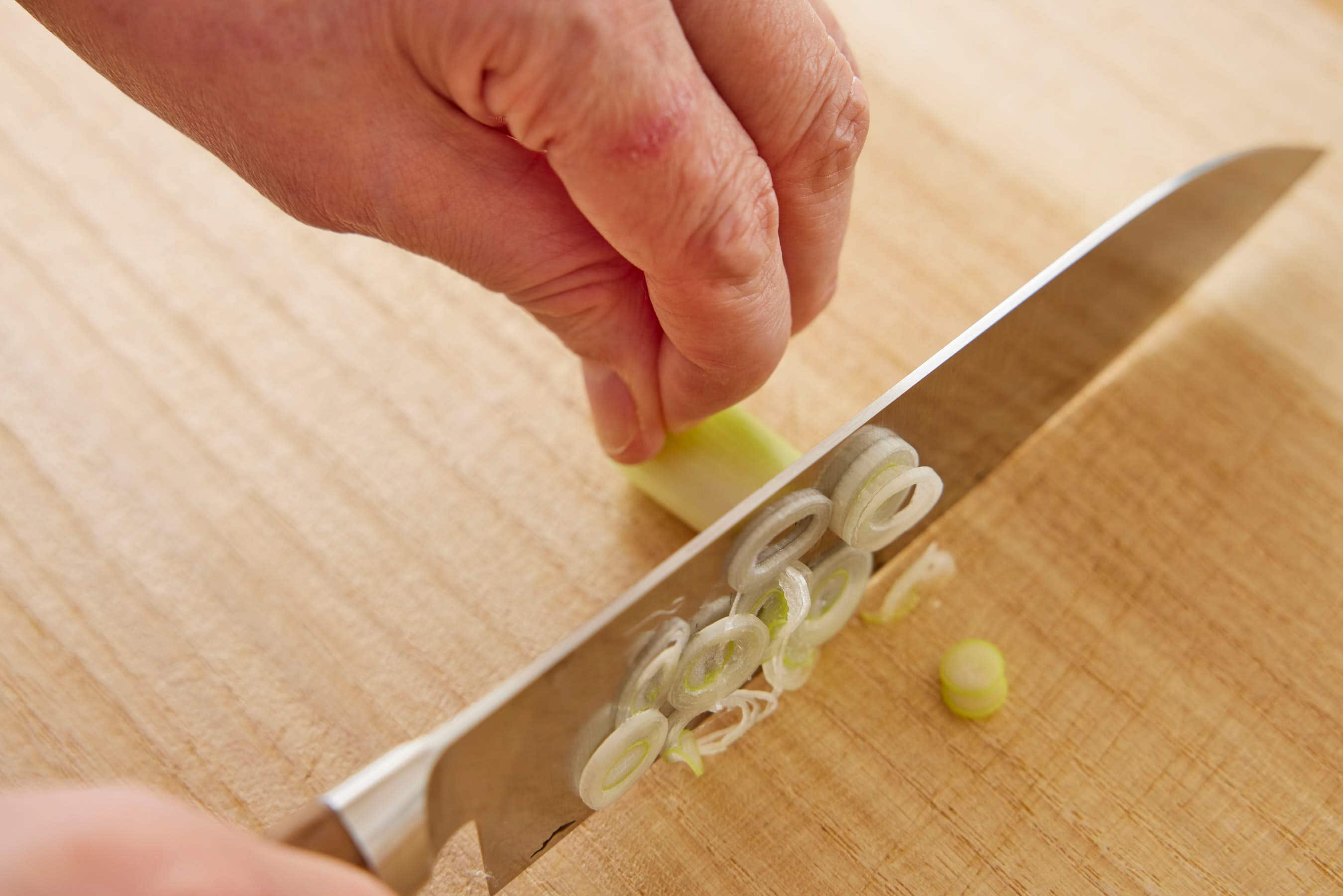
- 1Slice the green onion into thin rounds about 5 mm (0.2 in.) wide. Soak in water for about 5 minutes, then drain.
- TipsSoaking green onions in water helps reduce their sharpness.
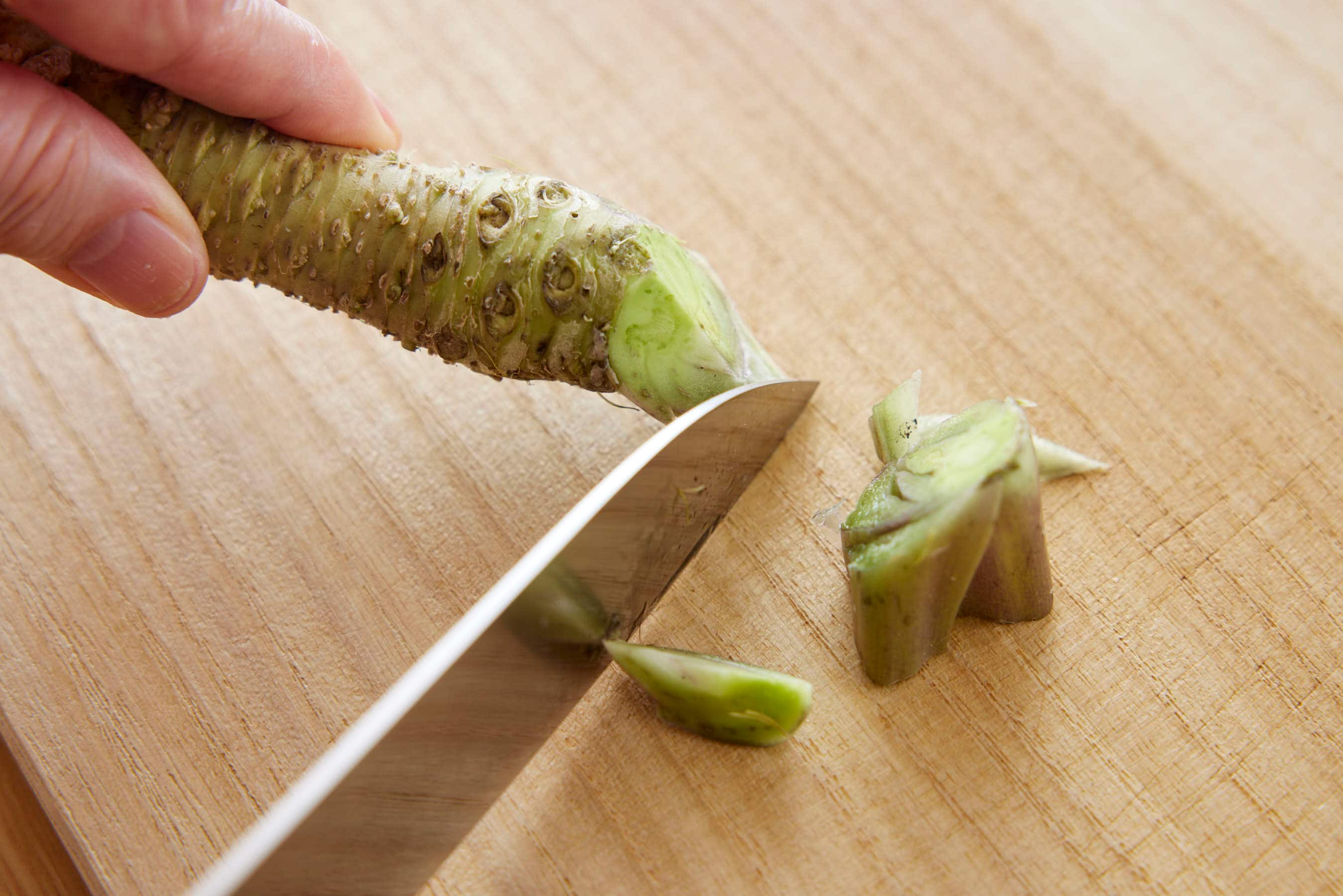
- 2Scrub the surface of the fresh wasabi with the tip of a knife or a scrubbing brush to clean it. Cut off the stem.
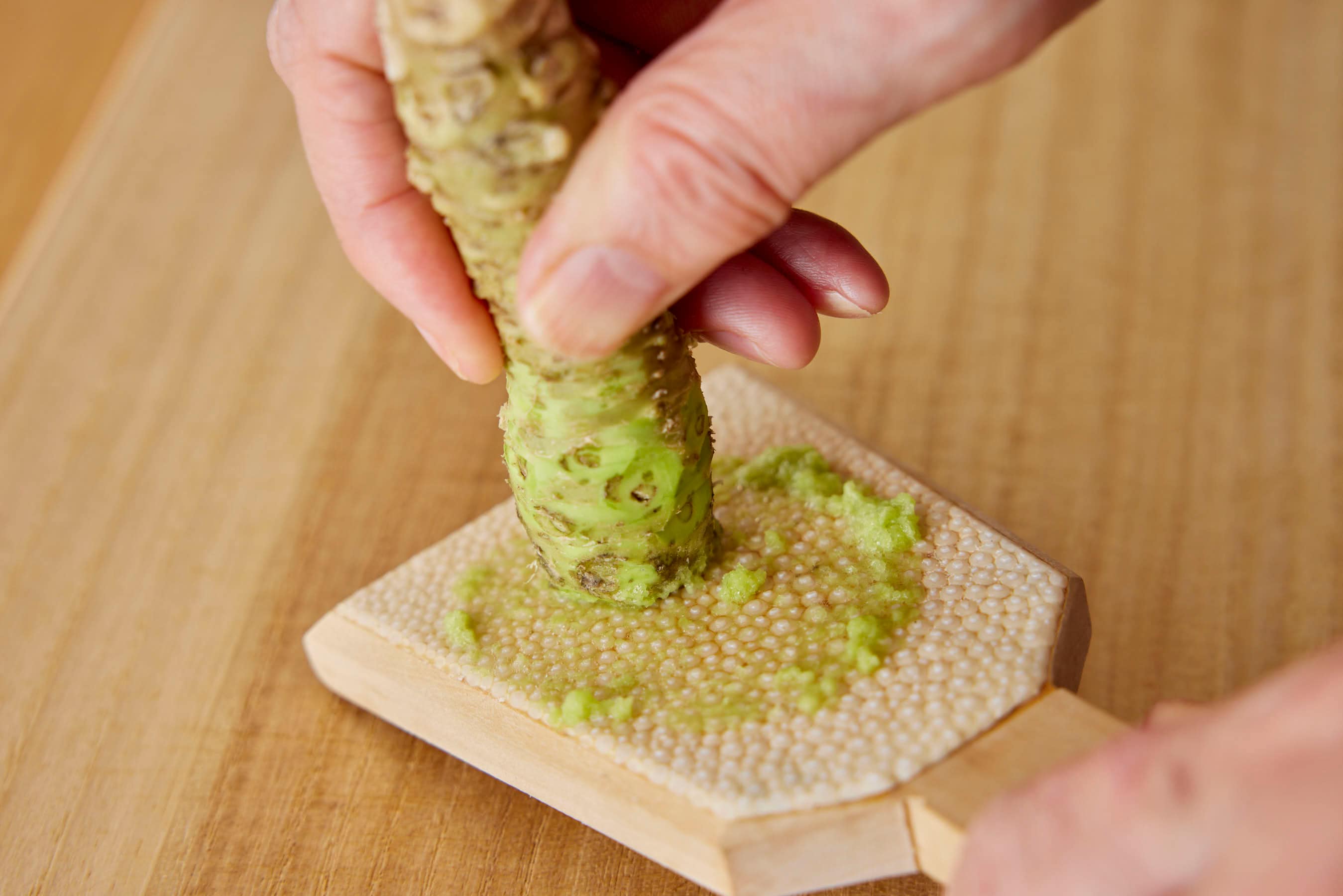
- 3Hold the green cut surface of the wasabi perpendicular to the grater and grate slowly in a circular motion.
- TipsGrating from the stem end brings out a better aroma. Once grated, wrap it in plastic wrap and store it in the refrigerator. Since the grated wasabi’s freshness fades with time, use it as soon as possible.
Watch video for preparing the condiments
How to Boil the Soba Noodles
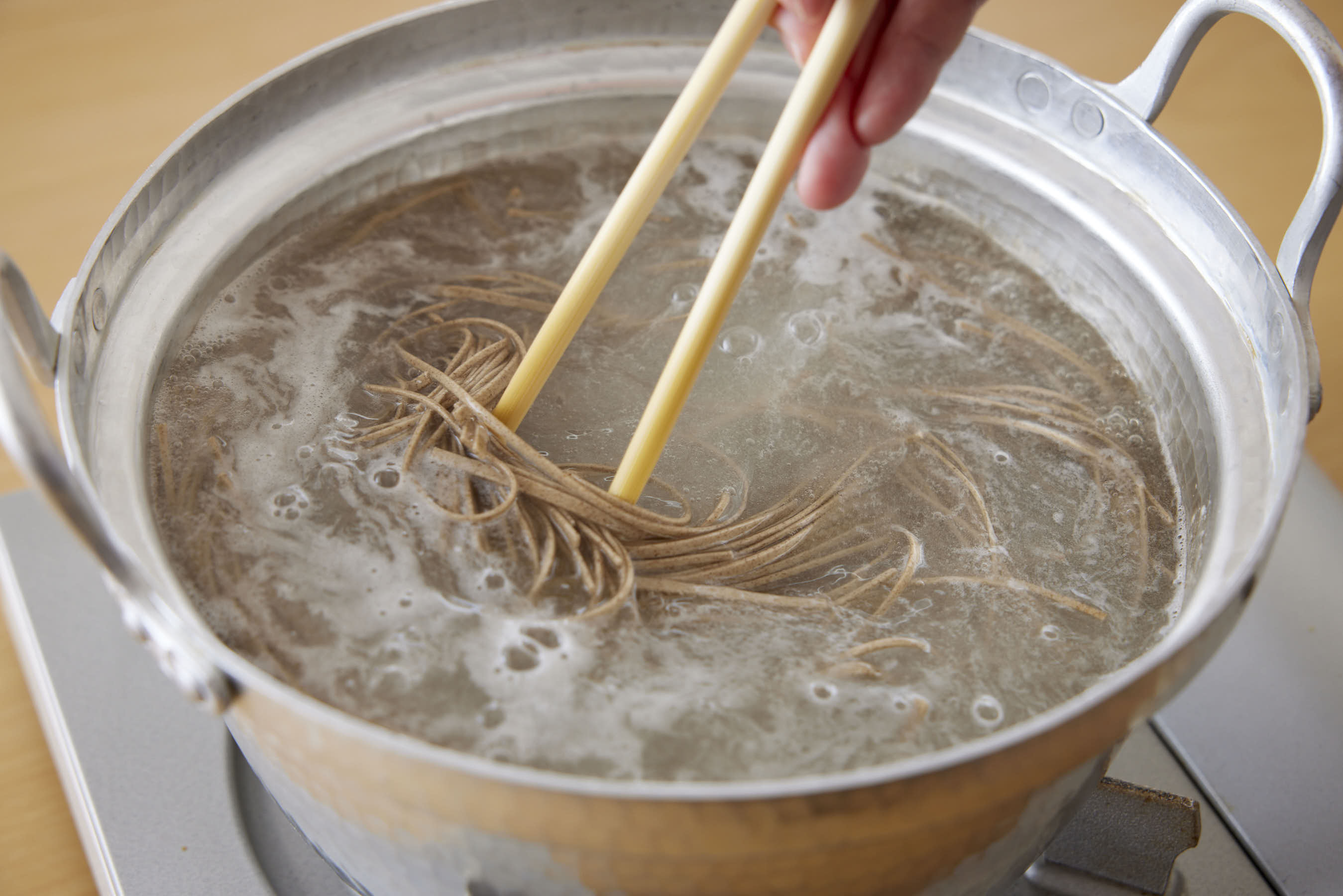
- 1Bring plenty of water to a boil in a pot and add the soba noodles. Use long cooking chopsticks (or other long stirring utensil) to stir and loosen the noodles, and cook according to the package instructions.
- TipsIt's important to loosen the noodles at the beginning to prevent them from sticking together. Stir the noodles in wide motions using cooking chopsticks.
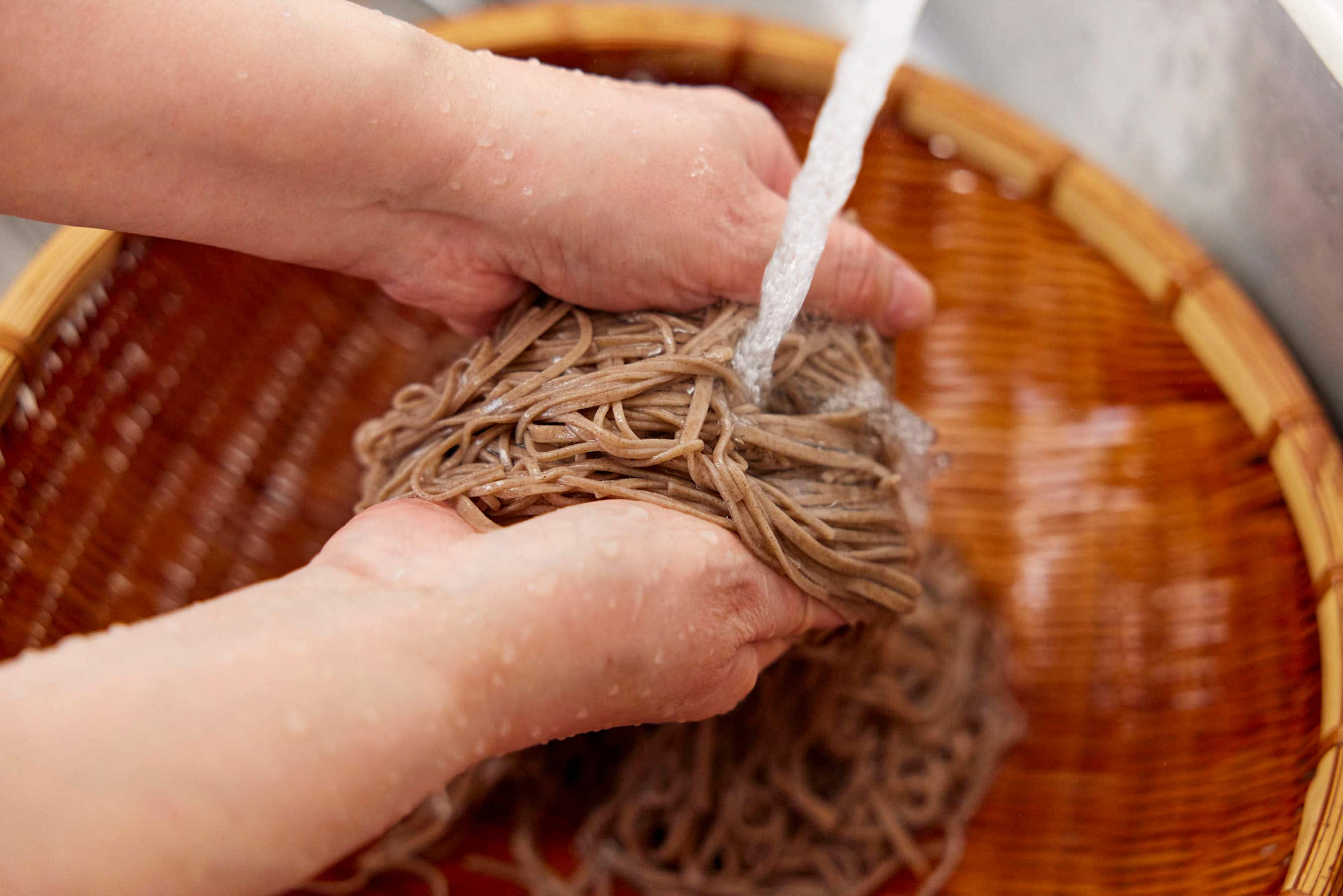
- 2Drain the noodles in a colander in the sink. Rinse under running water while gently rubbing the noodles with your hands.
- TipsWashing removes slimy surface starch from the noodles, and chilling them in cold water firms up the texture for a smoother mouthfeel.
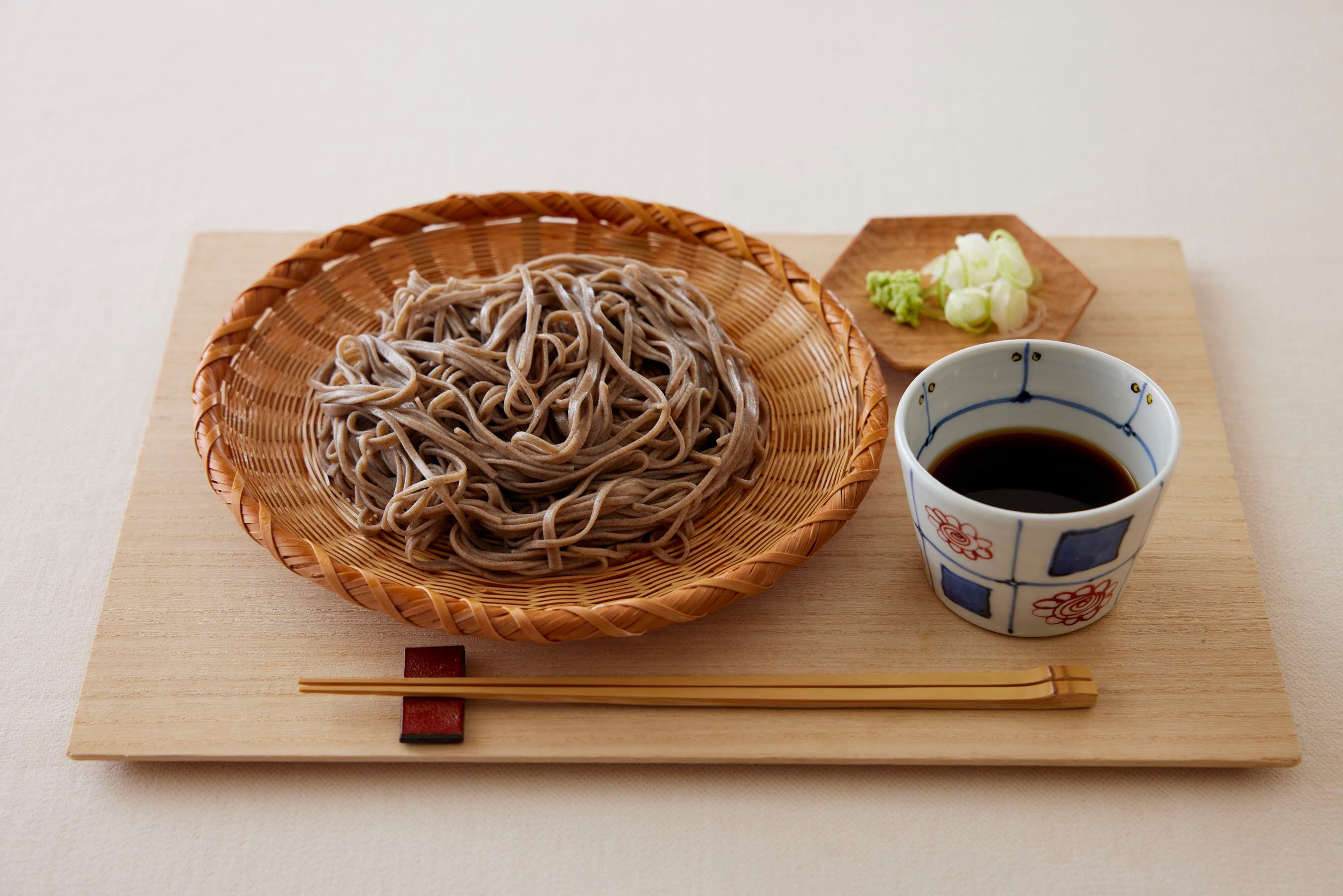
- 3Place the soba noodles on a “zaru” (bamboo tray). Pour the tsuyu (noodle soup base) into “soba-choko” (small cups) and serve with condiments on the side.
Watch video for boiling soba noodles
More Ways to Enjoy Soba
Soba Seafood Salad
Boiled soba and seafood are served as a salad with a dressing flavored with tsuyu. The flavor of the tsuyu pairs well with seafood. Enjoy by mixing with the vegetables as you eat. Feel free to use your favorite type of seafood!
Soba Peperoncino
The nutty aroma of soba goes perfectly with garlic and red chili peppers. Just like making pasta peperoncino, in this recipe you’ll stir-fry boiled soba noodles. If you like, sprinkle the final dish with grated cheese!
FAQ
What kind of soba noodles should I use?
Soba comes in two main forms: fresh noodles made by kneading and cutting the dough, and the dried version of that. This recipe uses dried soba, but if you can find fresh soba, it’s highly recommended—they offer an even more pronounced soba flavor. The color and taste of soba can vary depending on the ingredients and production methods, so try different types to find your favorite!
What should I do if I cannot find fresh wasabi?
Fresh wasabi has the most fragrant aroma, but it can be expensive and isn’t always easy to find. Tube-style grated wasabi is a common and convenient alternative!
What can I do with the katsuobushi (bonito flakes) after straining the tsuyu?
After being soaked with the umami of soy sauce and other flavors, katsuobushi can be enjoyed as-is over rice or used as a filling for “onigiri” rice balls!
Kitchen Utensils Used in This Recipe
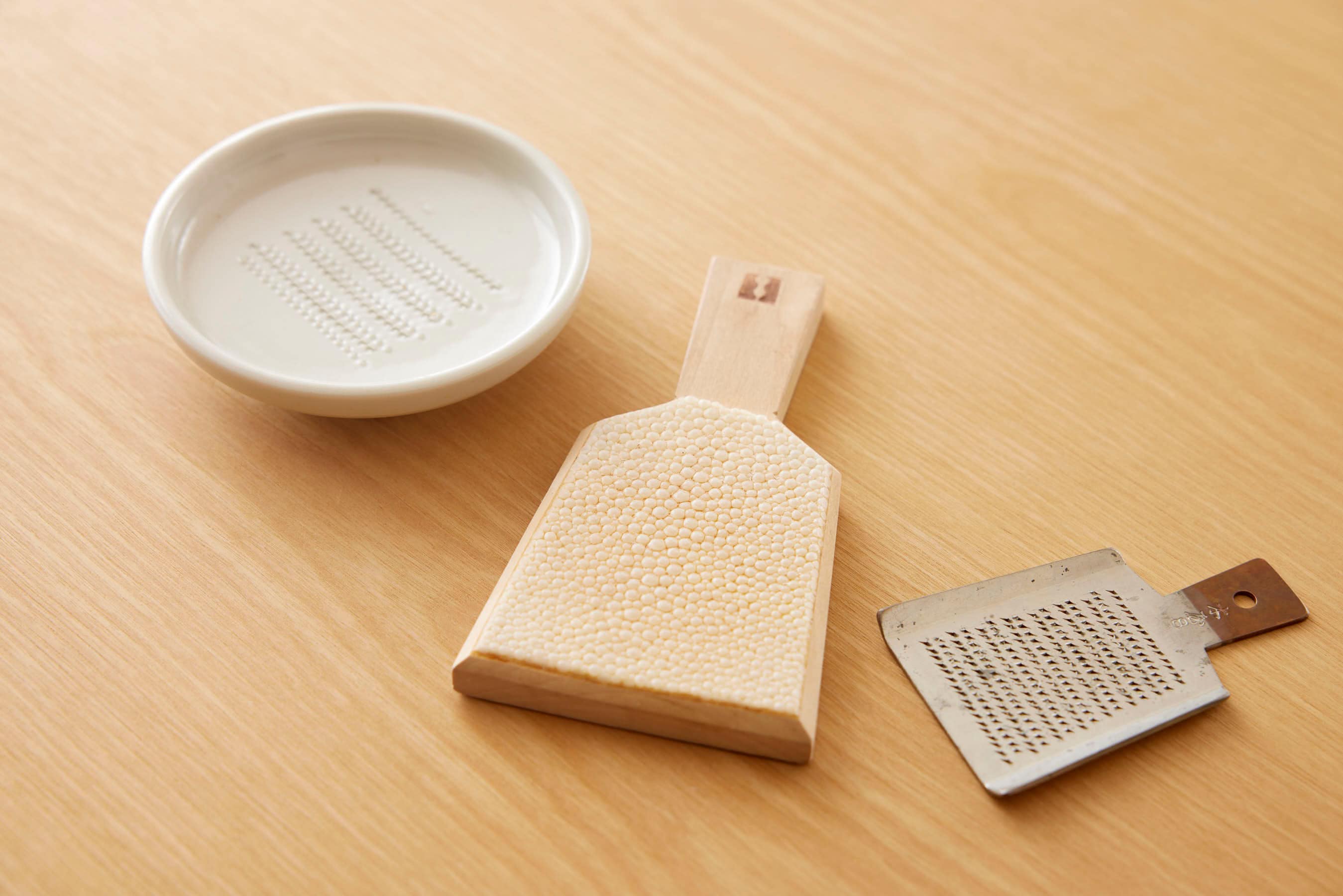
Oroshi / Grater
A small grater commonly used in Japanese cooking to grate aromatic vegetables for use as condiments. The most suitable type for wasabi is the traditional sharkskin grater (center in the photo), which has fine teeth that produce a smooth paste and are said to bring out more aroma. Fine-toothed ceramic (left) or metal (right) graters can also be used. These types are also useful for grating ginger or garlic.
For more information about “Oroshi / Grater”, please see our Glossary page.
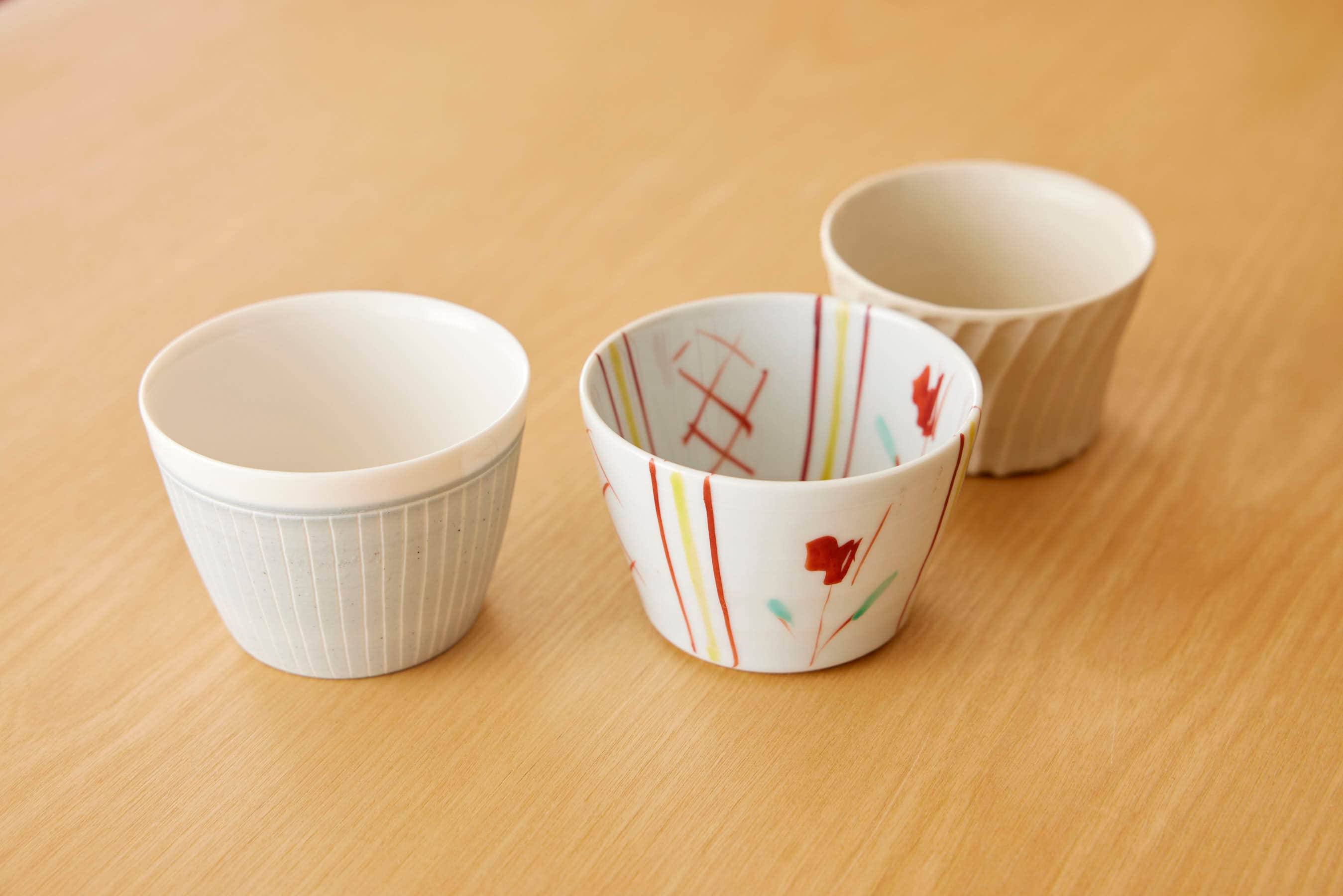
Soba-choko / Soba Cup
A soba-choko is a small cup used for holding noodle “tsuyu” (soup base) and dipping the noodles into. Originally, small cups like these were simply called “choko” and used for drinking sake or serving side dishes like “aemono” (dressed vegetables). When soba became popular during the Edo period, a wide variety of sobachoko with different patterns and shapes were produced, and people began to appreciate their beauty as tableware. Today, they are used not only for soba but also for serving dishes or drinking tea.
For more information about “Soba-choko / Soba Cup”, please see our Glossary page.
Trivia About Soba
How to Enjoy Soba-yu / Boiled Soba Water
The water used to boil soba, known as “soba-yu”, contains the aroma and flavor of the soba itself. Soba lovers often drink it to savor that rich fragrance. While soba-yu can be enjoyed on its own, the most common way to enjoy it is—after eating the noodles—pouring it into the remaining tsuyu in your soba-choko and drinking it. Be sure to adjust the amount to your taste, as the tsuyu can be quite salty.
Yuto / Soba-yu Serving Vessel
At soba restaurants, it is common for soba-yu to be served in a special vessel called a “yuto” around the time the customer finishes eating their noodles. This timing allows guests to enjoy warm soba-yu after their meal. The shape and design of the yuto can vary depending on the restaurant.
For more information about “Yuto / Soba-yu Serving Vessel”, please see our Glossary page.
Soba Seiro
A “soba seiro” is a type of steamer—usually made of wood or bamboo, and either square or round—that was traditionally used in the Edo period to steam soba noodles. Just as soba served on a “zaru” (bamboo tray) is called “zaru soba”, soba served on a soba seiro is called “seiro soba”. Although soba is no longer steamed in modern preparations, the name remains because of the serving style. Seiro soba is also sometimes referred to as “mori soba”.
For more information about “Soba Seiro”, please see our Glossary page.
Kikkoman Products Used in This Recipe
About the Recipe Author
Yuko Ihara
Having lived in England and the U.S., Yuko Ihara is well-versed in a wide range of culinary genres. As a culinary researcher, she creates dishes for magazines and books, develops corporate menus, and also engages in product development and food consulting. She introduces easy-to-follow tips on how to make delicious food at home, emphasizing the importance of seasonality and healthful eating. When travelling, she loves to search for delicious vegetables and ingredients.
Instagram: @iharayukoo
About Washoku Lesson
Washoku Lesson is special content offering detailed and easy-to-understand explanations, including tips for making classic Japanese dishes as well as the many ways of enjoying these, and introductions to special Japanese cooking utensils and annual events.
Related Recipes
30min
795kcal
1000mg
20min
450kcal
1100mg


